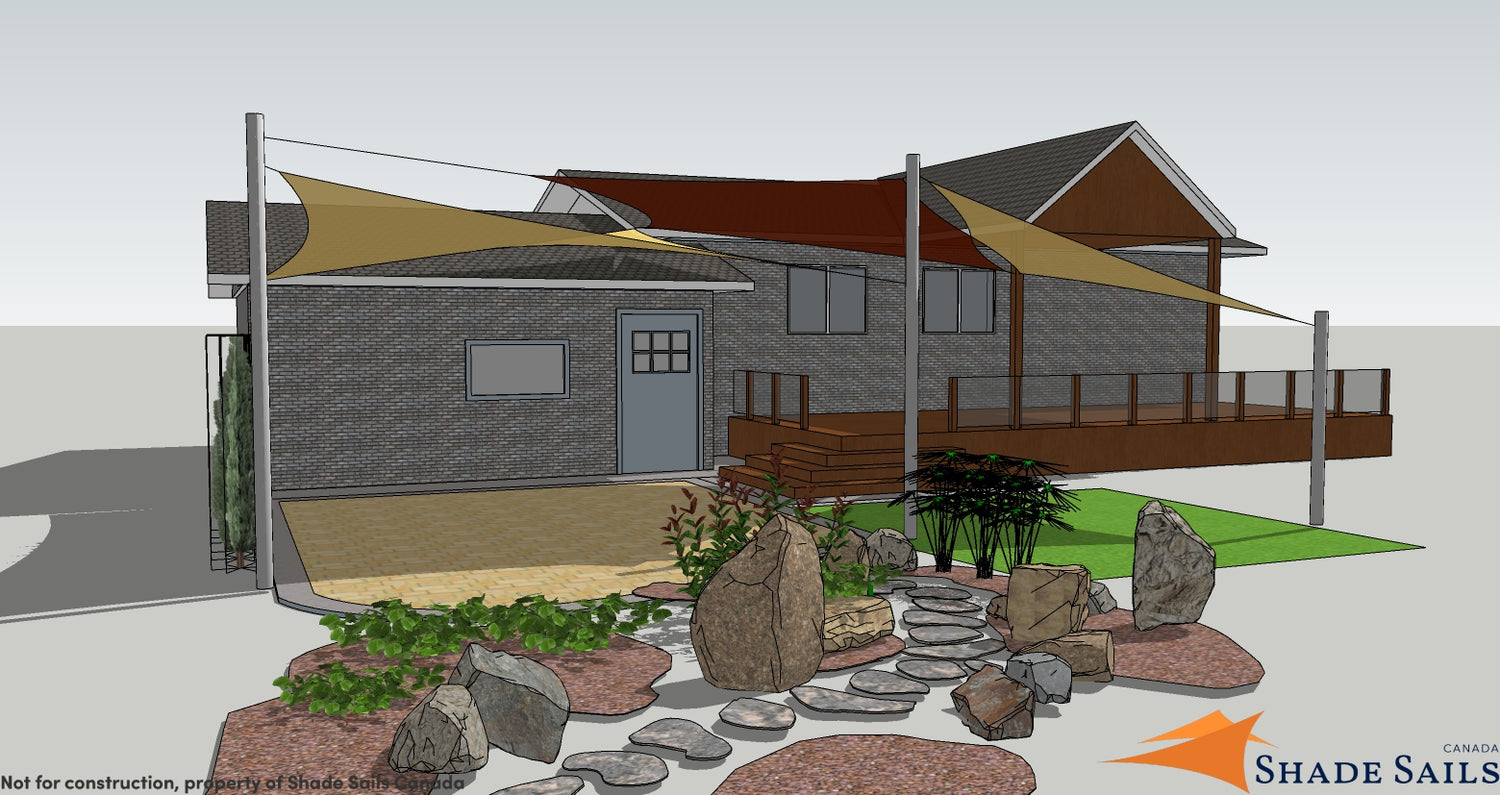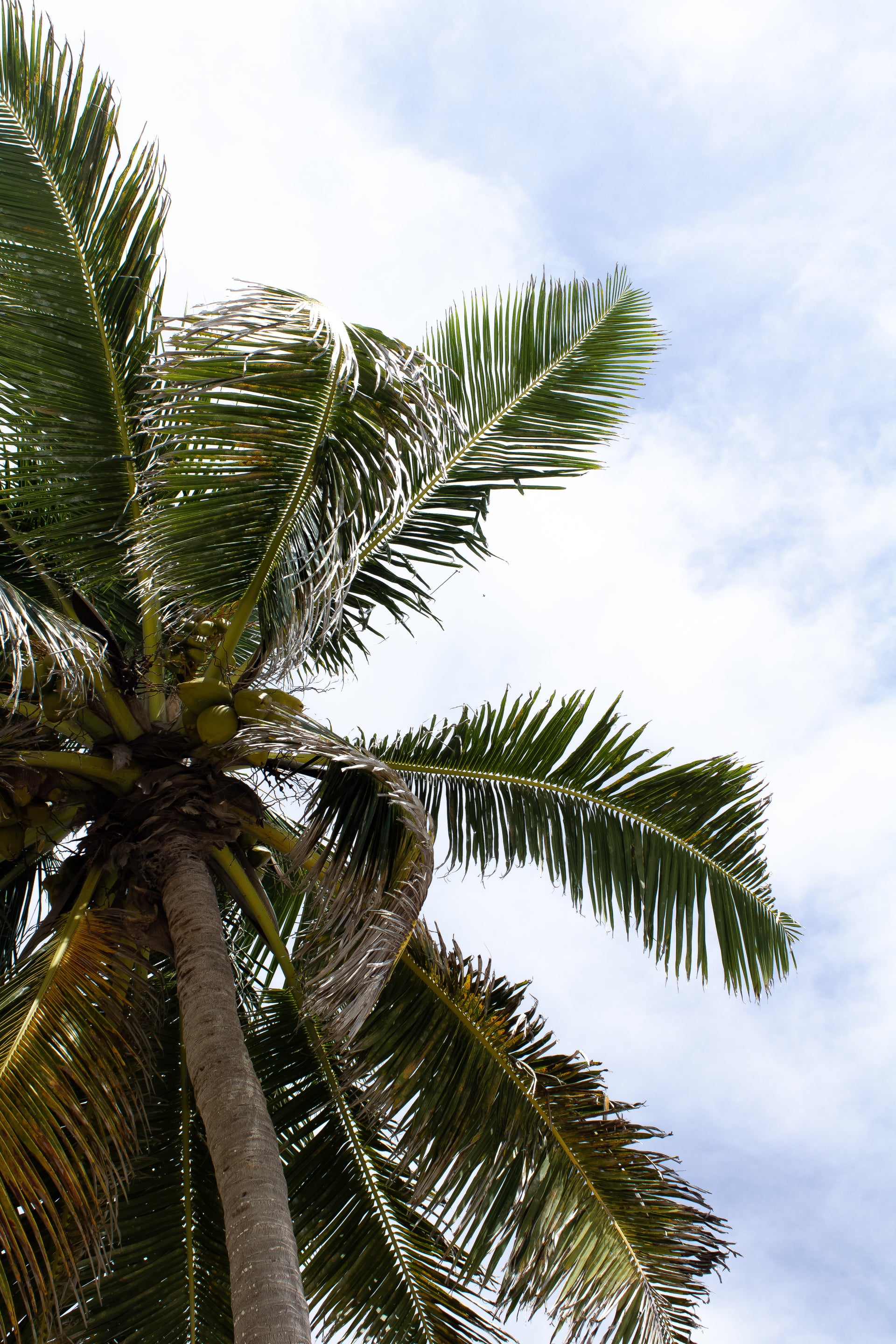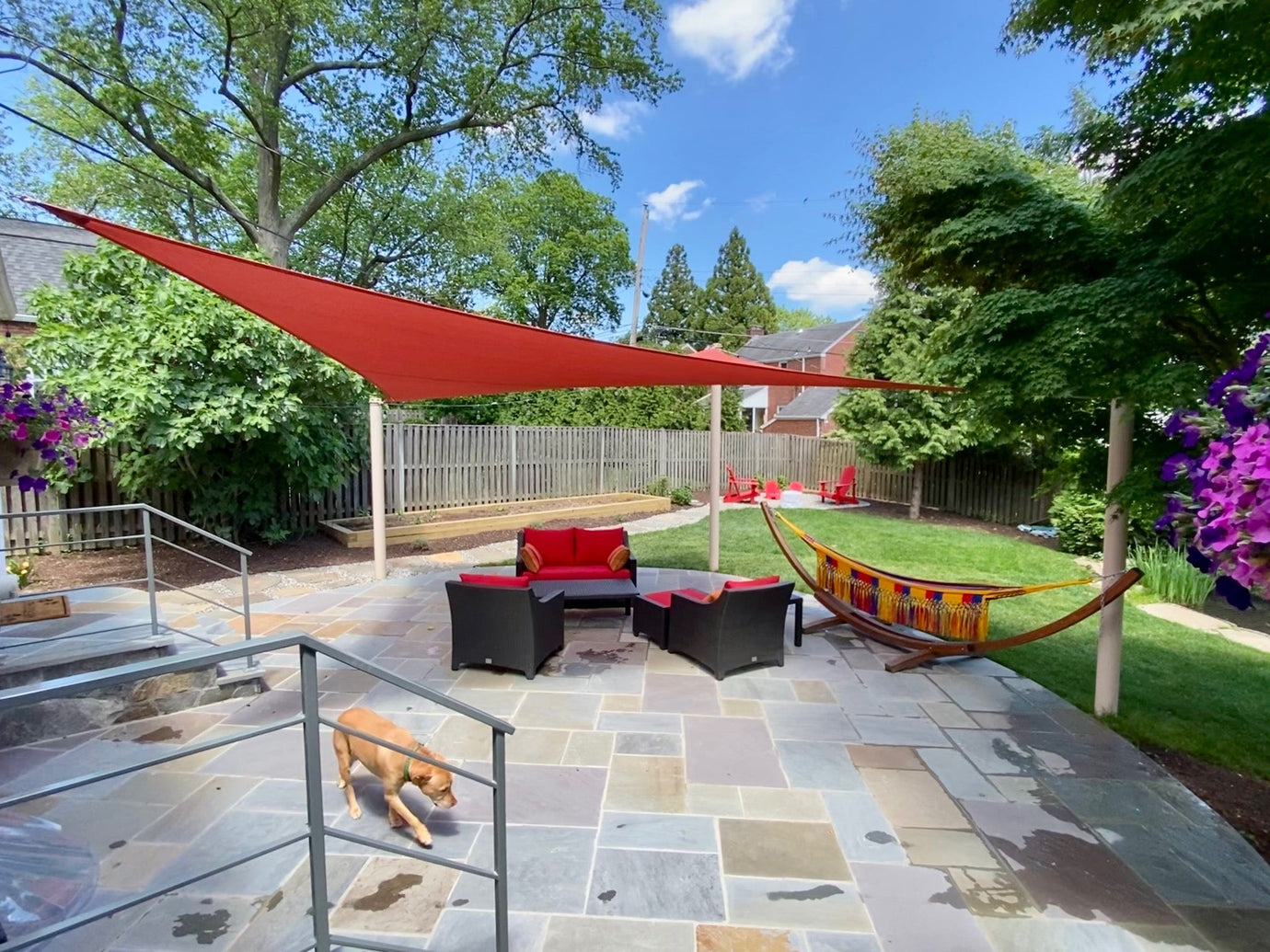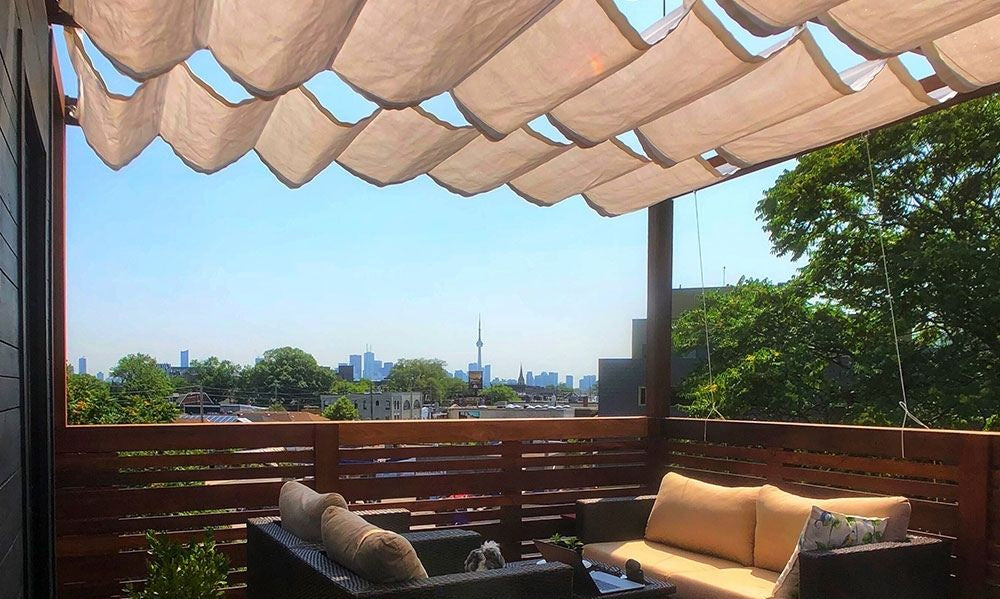Our YouTube channel includes detailed installation guides, frequently asked questions, product overviews and lots more. We are always open to content ideas so please let us know if there is a topic you would like us to cover.
Shade Sails vs. Traditional Awnings: Which is Best for Your Home?

Triangle Shade Sails
When it comes to casting shade in your backyard or patio, triangle shade sails are an increasingly popular choice amongst homeowners. This trend is hardly surprising given their modern aesthetic appeal and functional advantage. But are these shade sails truly a better alternative to traditional awnings? And if so, how can you best configure a triangle shade sail layout? Those are the questions we aim to answer in this informative piece.
Traditional awnings have been around for a long time, serving as a reliable solution to provide shade. They are essentially a secondary covering attached to the exterior wall of a building, typically over a window or a door. While they do serve well for shading, they can be restrictive as far as positioning versatility is concerned.

Enter triangle shade sails, a fresh, modern twist in outdoor shading. As the name suggests, these shades take the form of a sail, more specifically, a triangle. They exhibit an incredible potential for creative layouts, such as overlapping triangle shade sails, to create unique patterns and spread shade distribution.
One of the most valuable qualities of triangle shade sails is their flexibility. They don’t need to be attached to a building. You can anchor them to polsts, trees or any sturdy structure in your yard. This opens up endless possibilities for triangle shade sail ideas.
Choosing Between Traditional Awnings and Triangle Shade Sails
Another variant, the right triangle shade sail, has also been a sensation across property landscapes. This version is particularly advantageous for smaller areas due to its angled layout. When designed well, a right triangle shade sail can deliver a sophisticated aesthetic to your outdoor space.
However, the choice between shade sails and traditional awnings depends on your personal preferences, needs, and the architectural design of your home. If you prefer a modern, chic look and prioritize flexible layout options, triangle shade sails might be a perfect fit. On the other hand, if you have a classic themed home and need shading for areas right beside your doors or windows, traditional awnings may serve you better.
Triangle Shade Sail Vs. Traditional Awnings FAQ
How does a triangle shade sail compare to a traditional awning for home use?
Triangle shade sails and traditional awnings are two common options for creating shade in outdoor living spaces. A traditional awning is typically attached to the side of your home, extends out to provide shade immediately adjacent to your dwelling, and is typically designed with a retractable feature.
On the other hand, a triangle shade sail is a piece of tensioned fabric that is usually tied or attached to three strong points, potentially creating a broader area of shade anywhere in your yard.
Which is more effective in providing shade, a triangle shade sail or a traditional awning?
When it comes to providing shade, both can be effective under different circumstances. A traditional awning may provide much-needed shade directly next to your home, which is often ideal for shading windows or patio doors to reduce internal temperatures.
Meanwhile, the shade provided by a triangle shade sail depends on where you install it and the time of day. Due to its flexibility, a shade sail can be positioned optimally for maximum shade coverage for a particular area in your garden, even as the sun moves across the sky.
What are the pros and cons of triangle shade sails compared to traditional awnings for your home?
Pros of Triangle Shade Sails
- Versatile placement: Shade sails can be installed in various places, not just adjacent to your home.
- Stylish: Shade sails offer a modern and sleek aesthetic that is different from traditional awnings.
- UV protection: Most shade sails are UV-stabilized, providing excellent protection against harmful UV rays.

Cons of Triangle Shade Sails
- Less protection from rain: Triangle shade sails, due to their permeability, may not provide as much protection from rainfall as a traditional awning would.
- Installation: They require strong anchor points for installation. In some gardens, this may necessitate the installation of poles.
Pros of Traditional Awnings
- Sturdy protection: Awnings often provide a sturdier barrier against weather conditions like rain.
- Increase in home value: A high-quality awning can add to the value of your home and improve curb appeal.
Cons of Traditional Awnings
- May obstruct view: Large, permanent awnings might obstruct views from inside your home.
- Limited installation area: Traditional awnings are usually installed right next to your home.
Are triangle shade sails a better investment than traditional awnings for your home?
Whether a triangle shade sail or a traditional awning is a better investment depends on your specific needs and circumstances. If you're looking for a flexible and contemporary shading solution that is good for large outdoor spaces and offers UV protection, then investing in a triangle shade sail may be more worthwhile.
However, if you need stable, reliable protection from various weather conditions right next to your home, a traditional awning might be a better investment. Both options can add aesthetically pleasing elements to your outdoor space and cater to different design tastes.
Remember, every home is unique, and considering your personal needs and budget will help determine the best option for your home.
To conclude, triangle shade sails shine with their design versatility and modern appeal, while traditional awnings still hold value with their classic look and specific purpose serving. Choosing between the two depends on your home's architectural integrity, personal style preference, outdoor space size, and the type and amount of shade required. Understanding these considerations can help you make a well-informed decision for your outdoor shading solutions.



